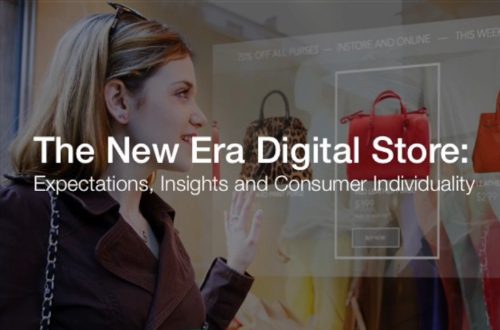In today’s omnichannel environment, retailers must rely on innovative technologies to meet the growing demands of the modern shopper. Many of these solutions are now deployed in the store, and are designed to create a more engaging and immersive experience for consumers.
During a recent webinar, titled: The New Era Digital Store, executives from Mozu and Forrester Research helped define omnichannel retailing success and outlined how retailers can leverage technology to improve in-store shopping experiences.
Adam Silverman, Principal Analyst at Forrester Research, opened the presentation to discuss digital’s role in the purchasing process. Although e-Commerce brings in only 10% of retail revenue, digital channels influence more than half (52%) of brick-and-mortar sales.
Advertisement
When it comes to the overall shopping journey, consumers expect a seamless experience and instant access to brand information. For example, 73% of shoppers expect retailers to have click-and-collect capabilities, while 86% expect to return online orders in the store, according to Silverman. Moreover, 89% of consumers also want to access store inventory while browsing online.
“One quarter of customers won’t even go into a store if they cannot view that offline inventory online,” Silverman said. “That’s because customers are pre-shopping and they want to have the confidence that when they go into the store, that the product they’re looking for is there.”
Once consumers venture to the store, they still rely heavily on technology — especially mobile devices. Over a three-month period in 2015, 21% of consumers used their phones to compare prices, while 20% used their devices to redeem coupons.
Keeping these shopping behaviors and preferences in mind, Silverman provided six recommendations for retailers looking to build the store of the future:
-
Expose inventory visibility;
-
Align teams and create a single view of the customer;
-
Optimize customer and staff mobile experiences;
-
Prepare for real-time, data-driven business in both online and stores;
-
Find ecosystem partners and build new business models; and
-
Build a digital store platform to centralize commerce and the digital experience.
Digital store platforms include multiple layers of integrated technologies such as enterprise back office systems, digital experience platforms for content and commerce, digital store systems for analytics, as well as contextual delivery.
“Digital experience platforms are present in e-Commerce and they’re now starting to be employed in physical locations as well,” Silverman said. “We’re not that far off from a central commerce and digital experience platform that runs both online and offline experiences. Contextual delivery is going to add third party data such as location, weather, or even social profile information.”
Building A Digital Platform Fit For Omnichannel Success
The rise and maturation of mobile technology has ushered in a new era of customer engagement. Because shoppers are so connected to these devices, which provide anytime, anywhere access to information, they have come to expect a seamless and hassle-free shopping experience.
For retailers to maximize omnichannel success, they must “break down the silo channeled tools and processes that are organically grown up over time for most retailers and brands,” noted Jason Wallis, Chief Technology Officer at Mozu. “If you don’t break that down, you may have all the capability in the world from a platform and toolset standpoint, but actually scaling a team to operationalize it because software requires care and feeding, isn’t as easy as buying software, installing it and getting 100% of the capabilities out of the box.”
During his presentation, Wallis spotlighted Jelly Belly and Sigma Beauty, two e-Commerce brands that implemented the Mozu platform. For the week after Jelly Belly launched its web site on Mozu, the company experienced record online revenues. Additionally, the company has since increased its mobile revenue share from 2% to 32%. In the case of Sigma Beauty, the retailer experienced a 36% conversion rate lift, a 42% increase in mobile sales and a 22% boost in time-on-site.
In order to build a consistent platform, retailers need to gather data from different sources that can provide information not only to consumers, but associates as well. Wallis recommended retailers to provide associates with a digital platform to guide shoppers along the product discovery and decision-making journey.
“If an associate doesn’t have the data that you’re looking for and can’t help you answer questions about a particular product, they aren’t seen as a helper and might not provide a very delightful experience,” Wallis said. “If an associate is empowered with technology so that they do have the ability to see inventory availability, pricing information, even view order history that’s available for a specific customer, then it becomes a very effective and delightful experience for customers.”









